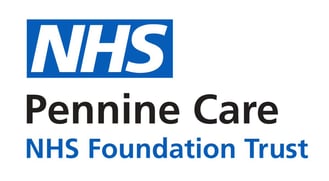Pennine Care NHS Foundation Trust: Transforming meeting management and culture — and freeing up time for what matters
Learn how Pennine Care NHS Foundation Trust transformed its meeting operations and culture — and freed up more time for what matters — by using Decisions.

Two years ago, Pennine Care NHS Foundation Trust kicked off an ambitious five-year plan to rethink the way they do, well, pretty much everything.
As one of more than 200 trusts within the National Health Services of England and Wales, Pennine Care provides mental health, learning disability and autism support services to people across Greater Manchester. There are more than 3,600 dedicated and skilled staff distributed across 88 different locations, all supporting 1.3 million people in need of Pennine Care’s services.
With an operation that large, undertaking such an overhaul of their objectives and operations was no easy task. And the team acknowledged so when the Trust established the five-year plan:
“We want to do things differently, but we’re not underestimating the scale of the change ahead of us. Let’s face it, there’s no part of our organisation that will be left untouched in five years’ time.”
Transforming meeting culture
One of the things that needed changing was how leaders and administrators at Pennine Care made decisions, ran meetings and documented project statuses across those 88 locations.
And that’s where Mike Culshaw, his team — and the Decisions team — came together.
Mike, the Chief Technology Officer at Pennine Care, joined the organization in late 2021, and immediately saw two key opportunities to drive transformation: Increase usage and adoption of the Microsoft tools they already invested in, and streamline how teams prepared for, ran and followed up from the many meetings they have every week.
Luckily, Decisions helps Mike fulfill both of those goals.
"We’ve had feedback from directors saying they want to see Decisions in all their meetings."
And so, after a few members of the executive support team discovered Decisions and quickly found value in it, Mike moved to roll it out for the entire organization.
“I clicked on Decisions, used it, and just loved it right away,” he says.
In the months since, there has been strong adoption of all of Decisions productivity, collaboration and record-keeping functionalities. That’s thanks in large part to a dedicated onboarding and ongoing training process from the Decisions team, but also top-down encouragement around changing meeting culture from the leadership at Pennine Care.
Keely Hardman, Information Management and Technology Business Support Officer at Pennine Care, is a key user and advocate for Decisions. Her role at the organization has shifted recently to help increase deployment and adoption of Decisions, as more and more teams find the value Decisions provides.
“A few days ago, one of the directors I used to support directly wrote me and said, ‘Can we please get this into Decisions!’” she laughs. “And it was done in five minutes.”
Keely says she continually gets requests like that, with meeting leaders asking that all their meeting materials get run through Decisions.
“We’ve had feedback from directors saying they want to see Decisions in all their meetings,” she continues. Keely and Mike say that both executives and their staffs demand to see the Decisions ‘d’ logo pop up in their meetings.

What lies ahead for Pennine Care
Over the next year, Mike says he is anticipating that users across Pennine Care will integrate Decisions into all their meetings, and as such use Microsoft Teams, Planner and other tools much more as well.
“My gut says it will help people become more comfortable with things like OneDrive, SharePoint, etc,” he says. “It should be used across all meetings!”
And beyond just making meetings themselves more efficient and effective, the time saved from not manually having to upload or disseminate meeting documents has allowed administrators, like Keely, to focus on other vital tasks is where the impact of Decisions has really been felt, she says.
“The time that I save by being able to easily pull agendas and papers together, I can use that time on the important roles we need to carry on with — like vacancies [job openings], etc.,” she says. “I have 10 to 15 vacancies I need to fill. The more time I’ve got available, the faster that is going to happen. Recruitment is now at light speed compared to before, which is critical, especially in this employment market.”

